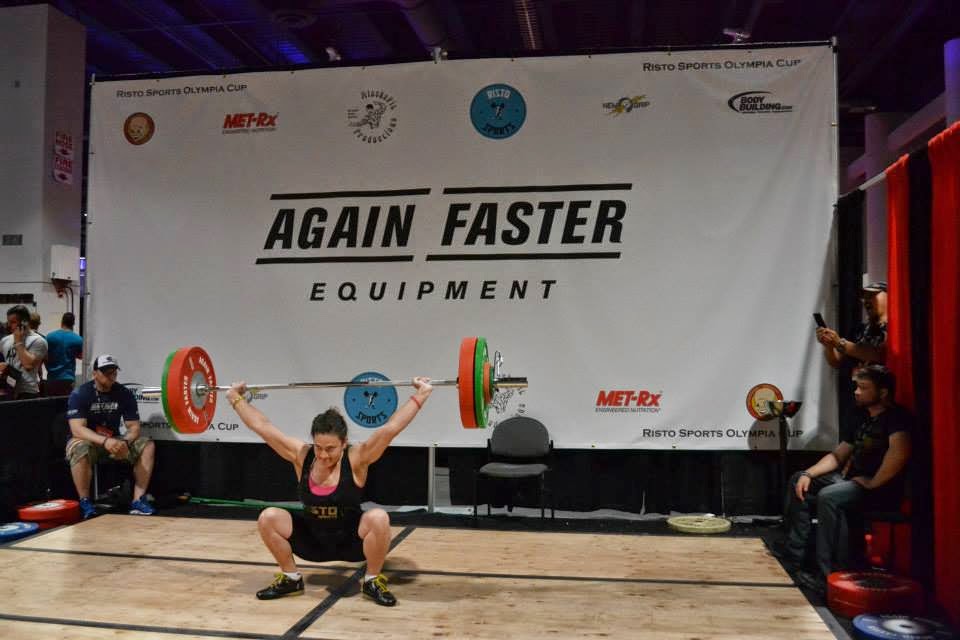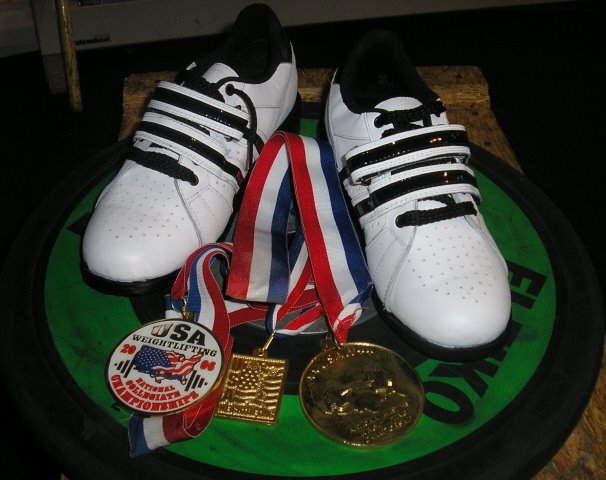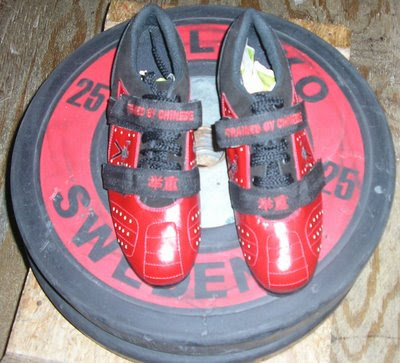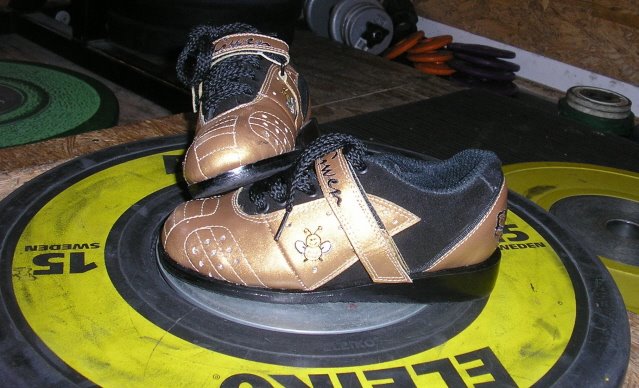There are a lot of good lifters out there who may have
missed teams for whatever reason and can burst on to the scene. Just look at
Charis Chan; she just broke an American Record, and,a year ago, no one would guessed she would be a 2015
American record holder. Or , who ever
heard of Angelo Bianco before the American Open? In effect, if we really want
to improve the level of lifting in the USA and have the best teams possible,
then we need to have qualification systems that can handle this.
In effect, making qualification procedures that we, the USAW, can actually follow is critical.
Back in 2012, I had written a series of articles on the USA qualification procedures, their opportunity areas, and ways they can be improved. I had done a series of posts starting with this one and part 2.
Our qualification systems are not much different than what we did in the 1990’s.
Our qualification systems are not much different than what we did in the 1990’s.
In the mid 90’s, in non-olympic years, there was one major
international team for seniors and juniors. And, teams only had one or two
qulaifiers, with one mandatory qualifier that everyone had to attend. The
national meets would be published in a calendar and would not be
changed-probbaly because no one used the internets for USAW news back then, so
it would be expensive to have to republish and mail out new competition
schedules.This always created a huge weakness for developing lifters, in that
if a lifter missed a team, they would have to wait another year for any
opportunity, and because qualifiers were every 6 months, there were no big
competitions for developing athletes to prove themselves and gain experiences
between years. I believe part of this was due to the fact that there were so
few lifters that it didn’t matter. On the other hand, I also believe part of
the system was due to political reasons, that it made the team selection very
predictable and more controlled.
So, now, 20 years later, we are kind of doing the exact
samething. And guess what, our men and women teams were ranked higher internationally
in the 90’s. In other words, we are doing “the same old shit” and getting less
and less results. The rest of the world
is improving faster.
Minor tweaks we made to our antiquated qualification system
Ok, USAW did make a few minor tweaks. Once upon a time in 1998, several OTC lifters
did not post a high enough qualifying total to make a world team at nationals,
so USAW added a secondary qualifier which actually had an unexpected affect of
lifters like Suzanne Leathers and Oscar champlin making the world team.
This practice of adding secondary qualifiers with only a few
weeks of notice re-emerged in the late 2000’s.
The biggest frustration is that if you don’t regularly talk with someone
on the USAW board, as a lifter or coach, you would have no idea that these
secondary qualification opportunities would come-up until you already decided
to max out at a primary qualifier.
Since 2013, secondary qualifiers have always been added to
the USAW calendar; to the point, that you could just expect that there would be
some last chance qualifier. For example,
for years, the Arnold was not a qualifier , then at the last minute , it would
be announced that totals would be used for international team selection as it
is a drug-tested meet. And, lifting in
special trials sessions wasn’t really enforced.
Again, people like me who don’t follow USAW gossip, would not know until
half way through our training cycles that there would be another qualification
chance.
In 2014, it was published on the USAW website , to
paraphrase, that lifters who haven’t been ranked in the previous 6 months and
qualified for an international team(ie came out of nowhere) may or may not be
eligible. And, wording was added in ~2015
that lifters lifting at secondary qualifiers had to lift in special trials
sessions. NOTE- in the past, anyone could enter the secondary qualifier without
pre-qualifying for a specials trails session. Or, rather, special trials
sessions weren’t really enforced.
This "trials session" rule appeared to be enforced when Leo Hernandez lifted
a total sufficient to qualify him for the Pan Am Games at the Arnold, yet
wasn’t put on the Pan Am Games team. I would guess because he fell into the
“not on the radar for 6 months” category (he became a US citizen several months
before the Pan Am Games) .
A few months later, Sarah Robles, fresh off the end of her
doping suspension, competes as a Collegiate competitor at the University
nationals. She posts a total at a drug-tested [correction-I was informed that the University Nationals and trials sessions were not drug-tested at all] meet to make her the number one
female in the country. She did not
compete in the special trials sessions, probably, because her ban ended after
the US Nationals qualification period; therefore, she couldn’t compete at
nationals to “qualify” for the special trials session.
On one hand, I agree with people who say that, “its not fair
that Sarah was put on the team and, hence, bumped Marissa Klingseis off the
team, because USAW didn’t follow the rules the enforced earlier in the year”. On the other hand, Sarah score the most points out of any
female on the US world Team at a competition for Olympic spots AND, in prior
years, trials sessions were not enforced, THUS USAW acted predictably. In other words, it was in
line with how USAW acted in past years to meet a strategic need.
This leads us to – what is the real problem (hint- its not
Sarah Robles) and what is the solution!
WHAT IS THE REAL PROBLEM WITH USAW’s qualification
procedures and how they can be IMPROVED
1.
Make rules we can actually follow 100% of
the time
One thing I learned at MIT, is that most rules are guidelines, and the key to life is understanding when a rule is really a rule. Having special “trials sessions” is probably going to fall into the guidelines area. We should accept totals from any drug tested meet to pick teams. Adding tricky little nuances will just lead to disputes over interpretation, so keep it simple.
When you have 3 or more people per weight class who could actually qualify for a team, then things are really interesting. Having additional qualifiers means those people lurking on the podium in second or third position, might just need another peak in their cycle to eclipse who is on top. This will in turn drive competitive results up.
2a. The formal method
For example, in Colombia, lifters are chosen from a mixture of results at national competitions and training results.
Lifters must compete at national championships. There are tests at the site of the national team training camp. Lifters can show-up at the national team training camps and vy for a spot on the team
The teams for international competitions are not chosen until the very last minute. Lifters are chosen based on their performance at training camps right before the major championship.
2b. The lifter pool method
Countries like Kazakhstan have pools of lifters training with different teams. Athletes can make teams based on either controlled workouts (tests) at the training camps. Or, athletes who train with less prestigious teams can be selected form their results at national competitions. Note, the athletes at the more prestigious training sites may not have to compete at a national competition at all as their training is so closely monitored and they are regularly tested.
We sort of already do this-- the issue is many of our national meets are age or demographic restricted - such as Junior nationals, Youth nationals, and Collegiate nationals.
I recommend we make open qualifier sessions with very high entry totals at all the age/demographic restricted meets because - well most of our world team is over 21 years old and not in college. If anything, this would make qualifying for teams more fair for people over 21 ( Yes, I said it, junior lifters have an unfair qualifying advantage over senior lifters. We had 1 female and 1 male junior lifter on our world team, they had more opportunities to post qualifying totals by virtue of their age. If you think juniors should have an advantage because of their age, then I pose to you: is there much difference between someone who is 20 and a junior vs someone who is 21 and a senior.....? )
Does this make sense? We could have a drug-tested event every 1-3 months where anyone with a big enough qualifying total can compete and get selected to a team.This would make weightlifting exciting and more interesting. Also, in ligt if the fact that Sarah Robles was selected to an international team at a non-drug tested event, USAW has set a precedent to mine lifters from non-drug tested sanctioned competitions.
Then.... we could even have a final selection camp only for the very most important competitions , like the Olympics. Just think about 2012 when Holley Mangold had a terrible wrist injury and still competed when any of our top 63's would have placed higher by virtue of the startlist.
And that brings me to my next point...
3. Set qualifying standards based on world ranking list distribution
This has a main effect: the super-light and super-heavy weight class biases ...
In the first 2 years of the Olympic quadrennium, the 48kg class and the 75+kg are some of the easiest classes to score points. They have less depth the first couple years.
By year 3, the final Olympic qualification year, countries looking to score some easy points flood the 48kg and 75+kg class with lifters, making these classes crazy more competitive than the first 2 years, and duping countries like the USA who , basing their qualifiers on the 2 previous years, send 2 48's thinking they would actually score a lot of points.
In the Olympic year, these 2 classes have insane totals needed to medal, that sending any lifter in this class that is not in the top 5% of totals is basically a waste because the chance of medaling is slim to none.
So, my point is, you can easily plot distributions of the world ranking list every year and see what quartile your lifters fall in. For example, in 2015, this would have probably shifted us to send more women in the middle to heavyweight classes than in the lowest weight classes.
4. Announce things months ahead of time
Make a calendar at the beginning of the year an stick with it.
Any weightlifter on a real training program will train in 12 week cycles. they will peak every 3-4 weeks. In effect, timing of events are critical so cycles can be planned. This would give athletes the option to pick which qualifiers to go to , including skipping the first qualifier to go to the secondary qualifier.














2 comments:
Gwen, I bought Nike Weightlifting shoes in 1993 from Marathon Sports in California. They had a hard foam heal and were blue and white. Sometime in the mid 90s I bought weightlifting shoes, that I still wear now, from some Maverick Barbell. The shoes has the letters V.S. on the back. Bob Hise owned Maverick and used to sell bumpers and bars. I bought most of my bumpers from Jesup Gym Equipment in Iowa. Rex, the owner was an old Olympic Lifter from the 60s and 70s and sold me used Eleiko and York bumpers and an older York bar. All of my home gym equipment is at least 30 years old and my shoes 20 years old. I quit lifting and got into Masters Track and Field when I turned 40 in 2002. I started lifting again three years ago and lift as a Master using the split in meets but I train doing power movements. Some days I can get into a full snatch squat and clean.
Hi, sorry I missed your comment. Thank you for the comment and sharing your history. Yes, I remember Mavrik barbell. I never had a chance to lift on their bars, and their bumpers were very good. I used to lift on York bars as a kid, sad they stopped making them. All my new bumpers are Again Faster which are very good.
Post a Comment